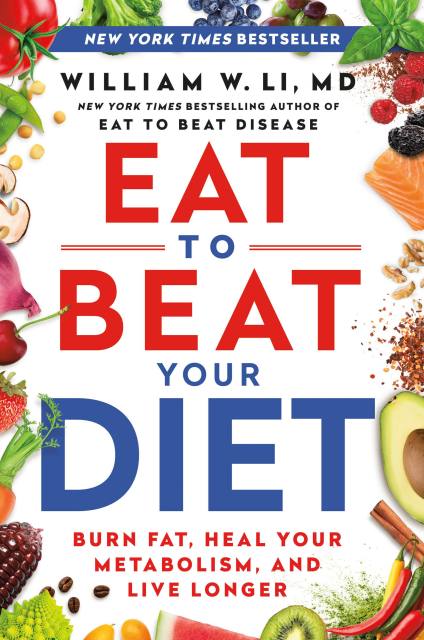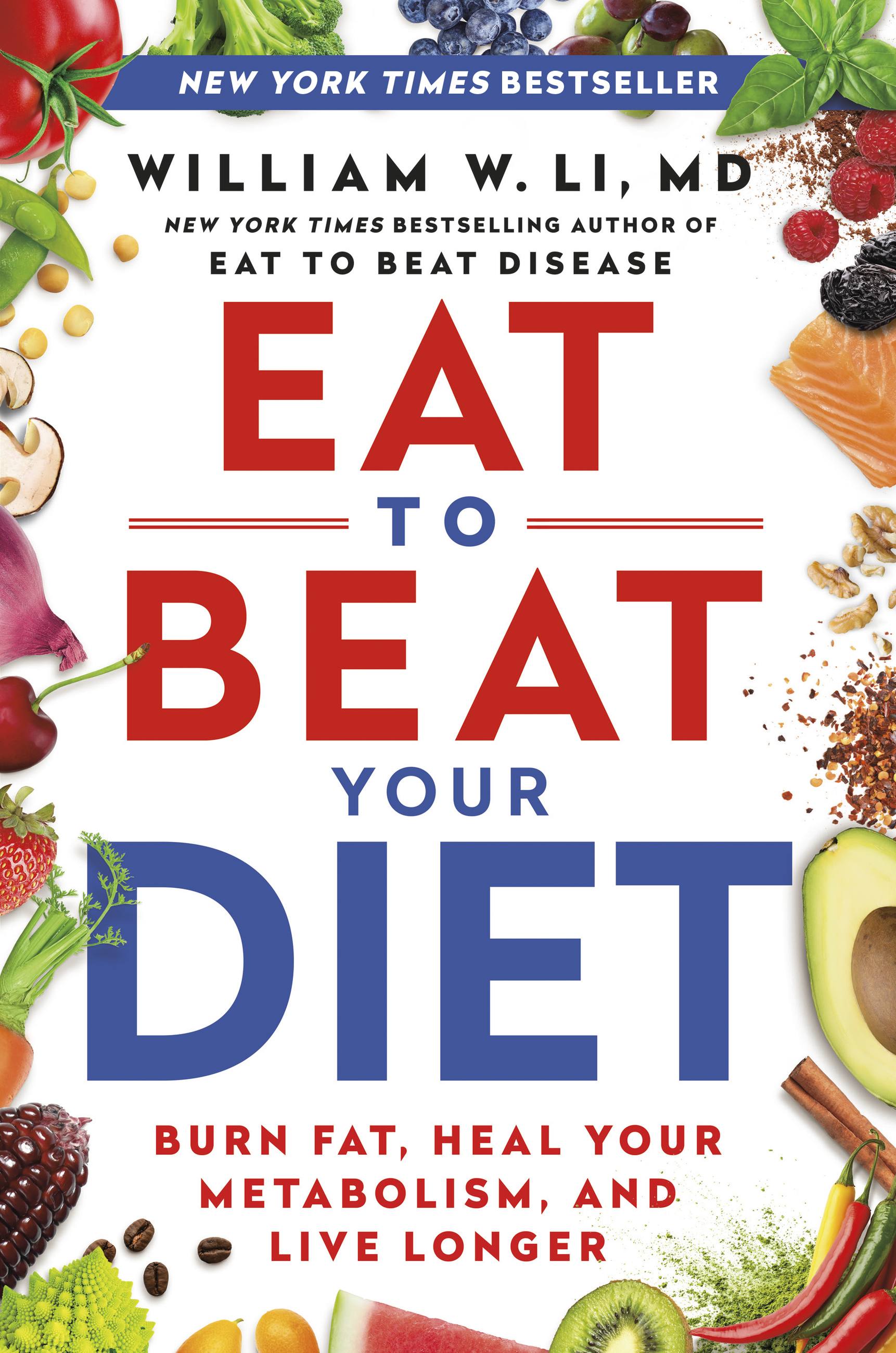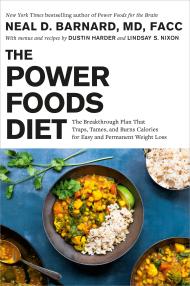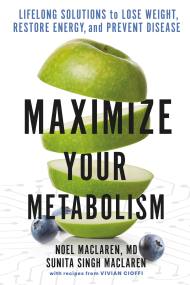Promotion
Use code BEST25 for 25% off storewide. Make sure to order by 11:59am, 12/12 for holiday delivery!
By clicking “Accept,” you agree to the use of cookies and similar technologies on your device as set forth in our Cookie Policy and our Privacy Policy. Please note that certain cookies are essential for this website to function properly and do not require user consent to be deployed.
Eat to Beat Your Diet
Burn Fat, Heal Your Metabolism, and Live Longer
Contributors
Formats and Prices
- On Sale
- Mar 21, 2023
- Page Count
- 496 pages
- Publisher
- Balance
- ISBN-13
- 9781538753880
Prices
- Sale Price $2.99
- Regular Price $14.99
- Discount (80% off)
Prices
- Sale Price $2.99 CAD
- Regular Price $19.99 CAD
- Discount (85% off)
Format
This item is a preorder. Your payment method will be charged immediately, and the product is expected to ship on or around March 21, 2023. This date is subject to change due to shipping delays beyond our control.
Buy from Other Retailers:
The pioneering physician scientist behind the New York Times bestseller Eat to Beat Disease reveals the science of eating your way to healthy weight loss.
In his first groundbreaking book, Dr. William Li explored the world of food as medicine. By eating foods that you already enjoy, like tomatoes, blueberries, sourdough bread, and dark chocolate your body activates its five health defense systems to fight cancer, diabetes, cardiovascular, neurodegenerative autoimmune diseases, and other debilitating conditions.
Now in Eat to Beat Your Diet, Dr. Li introduces the surprising new science of weight loss, revealing healthy body fat can help you lose weight; your metabolism at 60 can be the same as when you were 20; yo-yo dieting can be good for your health; 8-hour fasting windows can be as effective as 12-hour fasting windows; and losing just a little bit of weight can have big impacts on your health. Eat to Beat Your Diet shows readers how adding the right foods to your diet can heal your metabolism, reduce unhealthy body fat, and result in the kind of weight loss that can increase your lifespan and help you thrive. Foods like:
- Tomatoes
- Avocado
- Watermelon
- Carrots
- Blueberries
- Dark Chocolate
- Mushrooms
- Lentils
- Purple Maize
- Apple Cider Vinegar
- Turmeric
- Lobster
- Mussel
- Caviar
- Oysters
- Sea Bass
- Green Tea
- Soy Milk
- Coffee
- Pomegranate Juice
-
“When Dr. Li speaks, I don’t just listen, I eat what he says because with his huge brain and ever-curious mind he has helped me understand that food isn’t just something to fuel our days — it might just be fundamental to how many days we get to enjoy.”Bono
-
“In Eat to Beat Your Diet, Dr. William Li reveals the groundbreaking discovery that the best weight loss medicines in the world can be found in your refrigerator and pantry. Blending the science of molecular nutrition with the ancient food ways of the Mediterranean and Asian cultures, Dr. Li provides a delicious roadmap to harness the power of everyday foods to activate your fat burning systems and create long term health using the magic of your fork.”Mark Hyman, MD, Senior Advisor to the Cleveland Clinic Center for Functional Medicine, New York Times Bestselling Author of Young Forever
-
“Dr. William Li is a very trusted, valued dear friend. I am very excited about this book. My entire family are all fans of Dr. Will’s. This book takes on so much more for the reader. Dr. Will takes you on a tour of the grocery store, tells you all the foods you should be eating and all the data that backs that up, and 36 original recipes. Everything is incredibly researched and referenced. It’s such a great tool, as are all of Dr. Will’s books. Live long, live healthy.”Rachael Ray
-
“It is increasingly clear that our body fat does far more than just tip the bathroom scale. Fat plays such an important role in the human body that it should best be considered an organ, not just tissue. No one explains the new science of metabolism better than physician and scientist Dr William Li. With his accessible style, Dr Li reveals surprising data and joyful discoveries that will teach us all how to “Eat to Beat Your Diet.”Sanjay Gupta, MD, Associate Professor of Neurosurgery, Emory University; Chief Medical Correspondent, CNN
-
“The diet industry is full of misinformation. Dr. Li teaches us that all fats aren't created equally and how you can get healthy without going hungry! His book Eat To Beat Your Diet busts the myths and reeducates and coaches you on what's really good for your body while sharing delicious recipes that keep food pleasure in mind.”Carla Hall, chef, author, restauranteur, Food Network host
-
“In Eat to Beat Your Diet, Dr. William Li shows how what we include in our diet is as important as what we exclude. He integrates both the science and the joy of foods that improve our metabolism and reduce our risk of chronic diseases—eating well and eating good—and delivers new insights from human studies showing how we can eat foods we love that are also foods as medicine. If you want a prescription for eating well while enhancing your health, you can’t beat Eat to Beat Your Diet."Dean Ornish, MD, Clinical Professor of Medicine, UCSF, and multiple New York Times’ bestselling author.”
-
“Dr. Li is rare among physicians in that he’s actually more interested in keeping you healthy than chasing your disease. In this excellent new book, he marshals in the best, up-to-date science in an engaging way. If you want to know what to eat and why, it’s all here!”Dan Buettner, National Geographic Fellow and #1 New York Times Bestselling author of The Blue Zones books
-
“Dr. William Li has always been ahead of the curve. Both the reliability of his evidence and his passion for serving the public are self-evident. He traverses the evidence from the lab to the store to his clinic with exceptional skill.”T. Colin Campbell, PhD, Jacob Gould Schurman Professor Emeritus of Nutritional Biochemistry, Cornell University; Co-editor, The China Study
-
“Make your metabolism go from good to great with this empowering book by Dr. William Li.”Tony Robbins
-
“An interesting, thought-provoking read.”Richard Branson
-
“In his incredibly empowering and enlightening book Eat to Beat Your Diet, Dr. William Li has given us a crucial tool to understanding how eating consciously can help us look and feel healthier and avoid unnecessary illness.”The Edge
-
“This book is a wonderful minestrone — a science-led mash up of fascinating facts with smart guidance on where food and fat should be going in the future (who thought fat could be so interesting ?) with a light sprinkling of food history, tasty menus and the immortal Bruce Lee. A perfect feast for someone who wants to lose a few pounds and get a lot healthier. Like me in fact.”Peter Gabriel
-
“Eat to Beat Your Diet is a pioneering book that provides an innovative and simple approach toward beating disease and increasing longevity. Dr. William Li shows us how to control your body fat by taking charge of your metabolism. His introduction of the “MediterAsian” way to eating supports the compelling scientific case that food is medicine. What makes EAT TO BEAT YOUR DIET an exciting read is the way the author takes you on a virtual grocery shopping journey to find the best foods. It is clear that Dr. Li walks the talk.”Louis J Ignarro, PhD, Nobel Laureate in Physiology or Medicine, Author of NO More Heart Disease and Dr. NO
-
“Anyone who wants their health to glow should read this book! Dr. Li shows us smart, easy lifestyle choices that anyone can make to heal their metabolism and elevate their health — without ever having to go on a strict diet.”Cindy Crawford
-
"Finally a lifestyle book for people who hate diets and love food."Kelly Ripa
-
“With this book, Dr. Li does all the heavy lifting — weeding through the confusion about food — providing us with the tools to manage how and what we consume metabolically, and in so doing provides us with the promise of a healthy mind and body.”Bradley Cooper
-
“Dr. William Li is a true pioneer. He is my go-to guru. First, he taught us how to beat diseases like cancer with food as medicine, and now he is showing us how to reboot and optimize our metabolism! With cutting edge science on how to lose dangerous body fat that is truly jaw dropping, Dr. Li once again gives us a step-by-step guide on how to transform our bodies and our health for life-changing results that are lasting!”Jillian Michaels
-
“I’ve said before that when I’m on TV, 'I’m your chef, not your doctor.' But Dr. Li is in fact a doctor and he knows food, your body, and how you can eat better without compromising your love of eating. In Eat to Beat Your Diet, you can learn to enjoy your food and your health…what a concept!"Guy Fieri
-
“Dr. Li explains clearly, in language the layman can understand, what we have always intuitively known: food is the best medicine. Eat to Beat Your Diet shows us the How and Why…”James Taylor
-
“Eat to Beat Your Diet has scientifically backed information that helps you optimize your metabolism, restore healing and homeostasis, and regulate your weight naturally. It has all you need for a healthy lifespan. Highly recommended."Deepak Chopra, MD
-
“I have always said, "You are what you eat, and food is medicine!” Dr Li’s tome will be your guide and coach to not only understand foods and how your body reacts to them, but also how to cook delicious and simply prepared dishes to achieve your goals. Eat To Beat Your Diet is science-based and taste-forward, a perfect combo to live a healthier and happier life.”Ming Tsai, Chef, restauranteur, Host of Simply Ming show
-
"Eat Well, Be Well." That's sage Chinese advice I grew up with that has also become a part of my adult life. Instead of following fad diets, I stay with the basics - the right ingredients, prepared the right way. Dr. Li has taken that basic principle to a whole new level with his books. Eat to Beat Your Diet is a must read for every healthy family, starting with mine.”Martin Yan, Chef, restaurateur, Host of the Yan Can Cook show
-
“Add before you take away” has been my motto for decades. Dr. William Li brings that philosophy to life in Eat to Beat Your Diet by revealing what foods rev up your metabolism to help you get (and stay) lean and healthy. If you’re ready to say “adios” to the diet roller coaster and create a sustainable, practical plan that works, consider this book your blueprint for success.”JJ Virgin, Author of 4 New York Times bestsellers including The Virgin Diet and Sugar Impact Diet
-
"There is a revolution happening in our understanding of food and metabolic health. Would you like to know which foods and beverages are clinically proven to teach your fat cells to shrink themselves? What about foods that block your fat cells from growing excessively in the first place? Eat to Beat Your Diet will teach you exactly what those foods are, how they work, and what the best ways are to use them. It's a game-changer!"Shawn Stevenson, Bestselling author of Eat Smarter and Sleep Smarter
-
"Dr Li has written yet another phenomenal book that will become a critical resource for millions of people. Everybody needs to read this book and learn how food can protect and support our health whilst also improving metabolism, without having to succumb to restrictive dietary practices. Dr Li expertly discusses how food can be flavourful, enticing, delicious and healing through the lens of rigorous modern science and traditional culinary practices.Dr. Rupy Aujla, MBBS, BSc, MRCGP; Founder of "The Doctor's Kitchen"
It is a masterpiece of writing.”
-
"An apple a day keeps the doctor away!" Thanks to Dr. Li's book we can understand the scientific rationale of how nutrients in the different foods we consume work to preserve our health. This book is a superb exposition of proper nutrition's impact to reduce unhealthy fat, combat disease inducing inflammation and simply make us feel good. Unlike other efforts to "get healthy" this book is not about going on another diet but instead provides the rationale and recipes for healthy eating and enjoying food. Public health prescriptions have focused on the wrong things about food with emphasis on what to avoid but this book offers a rationale for choosing the right things to eat for both pleasure and personal health.Andrew Von Eschenbach, MD, President, Samaritan Health Initiatives, former director of the National Cancer Institute, former commissioner of the Food and Drug Administration
-
“In the often-crazy world of nutrition and diet books, it’s rare to have a real physician-scientist as your guide. Dr. Li lays out the compelling new science for the potential harms – and healing powers – of body fat, and how the foods we eat are powerful tools that can transform our fat into friend or foe. Eat to Beat Your Diet contains a wealth of actionable advice on how to eat better, improve our metabolic health, and enjoy the journey.”Darius Mozafarrian, MD, DrPH, Jean Mayer Professor of Nutrition, Friedman School of Nutrition Science & Policy, Tufts University; Editor-in-Chief, Tufts Health & Nutrition Letter
-
“Forget everything you think you know about dieting. In Eat to Beat Your Diet, Dr. Li shows us the real science behind your body’s fuel tank and teaches you how facts overcome myths. He reveals the truth behind body fat, weight loss and how to heal your metabolism. It’s a must read for everyone who wants to feel good, be healthy and look your best.”Robin Smith, MD, President, Cura Foundation and Stem for Life
-
“Dr. Li pulls back the curtain of confusion on metabolism and provides a yellow brick road of truth that includes the scientifically proven lifestyle and dietary habits that will transform your health.”Scott Stoll, MD, Co-founder The Plantrician Project, Olympian, Author, International leader of Lifestyle Medicine
-
“Deprivation and restriction are the old, failed ways of weight loss. The new model for metabolic health is to Eat To Beat Your Diet by enjoying an abundance of delicious, metabolism-supporting foods. Lose the fads and find the facts. Grab this book and get started today!”Will Bulsiewicz, MD, New York Times-bestselling author of Fiber Fueled
-
“’Here’s how we can, not why we can’t”. I was first introduced to this way of thinking as a NASA engineer and astronaut. “Here’s how we can…” is the underlying approach to solving our most challenging problems both on and off our planet. In Eat to Beat Your Diet, Dr. William Li tells us how we all can use this approach (and the science!) to be our healthiest selves — by eating to beat our diets (and defeating all those reasons why we think we can’t)."Nicole Stott, Astronaut, Artist, and Founder of the Space for Art Foundation
Newsletter Signup
By clicking ‘Sign Up,’ I acknowledge that I have read and agree to Hachette Book Group’s Privacy Policy and Terms of Use







